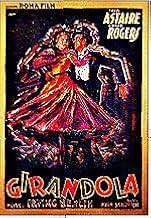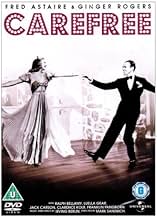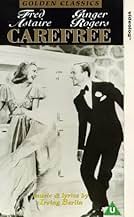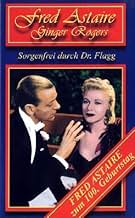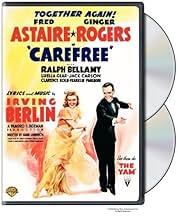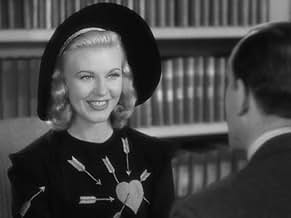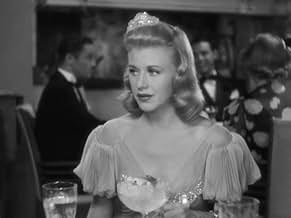CALIFICACIÓN DE IMDb
7.0/10
4.4 k
TU CALIFICACIÓN
Agrega una trama en tu idiomaA psychiatrist falls in love with the woman he's supposed to be nudging into marriage with someone else.A psychiatrist falls in love with the woman he's supposed to be nudging into marriage with someone else.A psychiatrist falls in love with the woman he's supposed to be nudging into marriage with someone else.
- Nominado a 3 premios Óscar
- 4 nominaciones en total
The Robert Mitchell Boy Choir
- Vocal Ensemble
- (escenas eliminadas)
- (as Robert B. Mitchell and his St. Brendan's Boys)
Harry A. Bailey
- Sponsor
- (sin créditos)
Bobby Barber
- Minor Role
- (sin créditos)
Cliff Bergere
- Minor Role
- (sin créditos)
Ralph Brooks
- Country Club Guest
- (sin créditos)
James P. Burtis
- Glass Truck Driver
- (sin créditos)
Harry Campbell
- Minor Role
- (sin créditos)
James Carlisle
- Country Club Guest
- (sin créditos)
Charles Coleman
- Doorman
- (sin créditos)
Argumento
¿Sabías que…?
- TriviaThis was the first Fred Astaire-Ginger Rogers film to lose money on its initial release. It lost $68,000 (~ $1.48M in 2024) for RKO according to studio records.
- ErroresIn the golf sequence, one of the five golf balls thrown on the solid base has rolled off onto the grass. After Fred has hit the first four balls, the camera cuts to a new angle and the last ball has moved from the grass to the solid base.
- Citas
Stephen Arden: [drunkenly] Oh, uh, could you give me a little information?
Doorman: Yes sir.
Stephen Arden: Thank you.
[walks away]
- Créditos curiososDuring opening credits, a pair of hands finger-paints names, pauses, wipes them out, and writes the next set of names several times.
- ConexionesFeatured in Fred Astaire: Puttin' on His Top Hat (1980)
- Bandas sonorasSince They Turned Loch Lomond into Swing
(1938) (uncredited)
Music by Irving Berlin
Danced by Fred Astaire
Opinión destacada
If you attempt to look at the plot carefully (never a good idea in a musical) this is a rather repellent movie. The practice of Psychotherapy wasn't as well known or as well respected as it is today, and the film was clearly written by someone who seemed to think of it as some fad medical cure indulged in mainly by rich and foolish women. As such we get to see Fred Astaire, the therapist, subjecting Ginger Rogers, the patient, to all manner of barbaric (to modern eyes) treatments in order to find out why she won't marry his best friend. Eventually Astaire uses hypnosis to force her to marry him, and then force him not to. Clearly, movie doctors were not subjected to as severe a code of ethics as are real ones.
Its a pretty typical outing for Astaire and Rogers. Astaire's dancing is extraordinary (the dance scene on the golf course is great, as is the one where he dances with a hypnotized Rogers). Rogers' comic timing is, as always, wonderful. The secondary characters are all two-dimension cut-outs, but they're entertaining ones. If the characters didn't have quite the same sparkle to their interplay, remember, this was Astaire and Rogers' eighth film together and artistic differences were beginning to create a strain.
My biggest issue with this movie was the scene in which they sing the song "I Used To Be Colorblind". This was dream sequence, and it lasted about five minutes. "Carefree" is a black and white movie and the intent originally was to film the dream sequence in color a'la "Wizard of Oz". Apparently, somewhere in the production process, people balked at the cost and it was produced in black and white along with the rest of the film. Being filmed in black and white makes the song, and the entire sequence makes not one lick of sense, because the song is about how crisp and clear the world seems in color. Not only that, but since it was designed to be viewed on color film, not in black and white, the sets weren't designed with that same high degree of contrasts they would have if they had been designed to be viewed in black and white. As such, things in the dream sequence are LESS clear than in the rest of the movie, not more. I'm just appalled that the studio could spring for a few minutes of color footage for a film with such proved money-makes as Astaire and Rogers.
Its a pretty typical outing for Astaire and Rogers. Astaire's dancing is extraordinary (the dance scene on the golf course is great, as is the one where he dances with a hypnotized Rogers). Rogers' comic timing is, as always, wonderful. The secondary characters are all two-dimension cut-outs, but they're entertaining ones. If the characters didn't have quite the same sparkle to their interplay, remember, this was Astaire and Rogers' eighth film together and artistic differences were beginning to create a strain.
My biggest issue with this movie was the scene in which they sing the song "I Used To Be Colorblind". This was dream sequence, and it lasted about five minutes. "Carefree" is a black and white movie and the intent originally was to film the dream sequence in color a'la "Wizard of Oz". Apparently, somewhere in the production process, people balked at the cost and it was produced in black and white along with the rest of the film. Being filmed in black and white makes the song, and the entire sequence makes not one lick of sense, because the song is about how crisp and clear the world seems in color. Not only that, but since it was designed to be viewed on color film, not in black and white, the sets weren't designed with that same high degree of contrasts they would have if they had been designed to be viewed in black and white. As such, things in the dream sequence are LESS clear than in the rest of the movie, not more. I'm just appalled that the studio could spring for a few minutes of color footage for a film with such proved money-makes as Astaire and Rogers.
- JasonLeeSmith
- 13 sep 2007
- Enlace permanente
Selecciones populares
Inicia sesión para calificar y agrega a la lista de videos para obtener recomendaciones personalizadas
- How long is Carefree?Con tecnología de Alexa
Detalles
Taquilla
- Presupuesto
- USD 1,253,000 (estimado)
- Tiempo de ejecución1 hora 23 minutos
- Color
- Relación de aspecto
- 1.37 : 1
Contribuir a esta página
Sugiere una edición o agrega el contenido que falta

Principales brechas de datos
By what name was Baila conmigo (1938) officially released in India in English?
Responda
